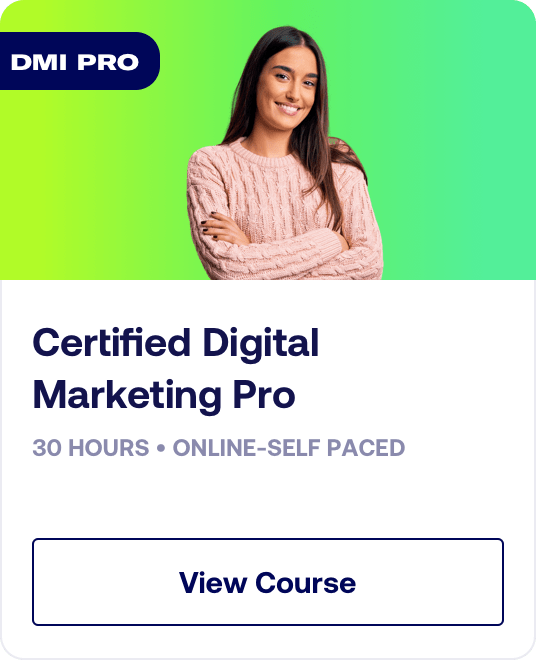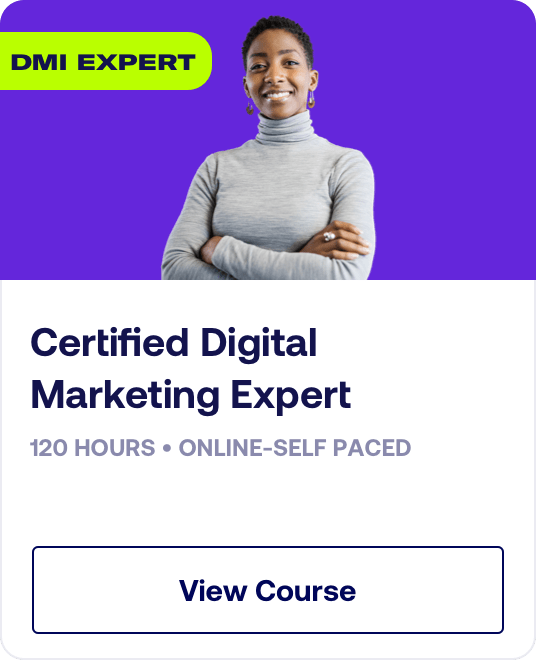Digital Marketing - Study Notes:
Key digital channels
Let’s explore the channels you should consider when developing an omnichannel strategy.
Omnichannel is a cross-channel strategy. It encompasses traditional channels, digital channels, physical, and online experiences.
In terms of digital channels, an omnichannel marketing strategy may include the following:
- Website
- Social media
- Display
- Video
- Remarketing
- Search marketing (PPC and SEO)
- Affiliate marketing
- Mobile marketing (SMS and apps)
Think about how customers use these digital channels to interact with your brand at various touchpoints. For each digital touchpoint, ask yourself:
- Where exactly is the customer in their customer journey?
- What do customers expect from brands or businesses on this channel?
- How does this channel influence the overall customer experience?
Then you can optimize each channel to maximize your effectiveness and success.
Importance of website optimization
It's essential to understand how optimizing your website can lead to omnichannel success. Optimization is a necessary step, as you typically drive people to your website when they click through from a digital marketing campaign. Your website or mobile app is likely to be the last point of contact before someone buys, so optimizing the experience to match customer preferences is essential for success.
If users log in with their email address, you can personalize their experience on your site. For example, you can give them recommendations for products they might like to buy, based on how you’ve profiled their buying habits.
Different customer expectations on different channels
When it comes to digital channels that drive traffic to your website or mobile app, it's worth bearing in mind that they fall into two categories:
- Some of these channels are marketing channels that help drive consumer demand and build your brand in the minds of customers
- Others are sales channels that close the deal and facilitate sales
As a result, customers have different expectations of the messaging on different channels. However, by using a data-driven, omnichannel approach, you can create the type of experiences, content, and messaging customers expect on each channel. This ensures your customers are satisfied and helps drive performance and maximize sales.
Outbound channels
Some digital channels drive customer demand by creating awareness. These are typically known as outbound channels.
With any kind of outbound marketing, the interaction with the customer is initiated by the business or brand. So, in a sense, outbound involves interrupting potential customers. For example, you might interrupt people by showing them a display banner, video, or social media ad because you believe they might be interested in your offering.
Customers might not actively engage with you at this point. After all, they didn’t actively seek out your ad. And they might be busy doing something else. However, if they see your ad enough times, it’s likely that they will remember it and recall your messaging.
So, you can use your digital channels to create awareness of your product or brand and encourage people to become interested in your offering.
Inbound channels
Customers also use digital channels when they’re further along on their purchase journeys. For example, they might use digital channels to search online, research available products, weigh up various options, find solutions to problems, and ultimately make purchases. They could use digital channels to ask questions on social media or to sign up for email updates.
When digital channels are used in this way, they’re known as inbound channels. In such cases, the interaction with the customer is initiated by the customer, not by the business or brand.
Customers who initiate inbound interactions are highly motivated to find the information they need to take an action or solve a problem. They’re very likely to purchase when they interact with a brand that meets their needs and expectations.
Incorporating outbound and inbound tactics
When devising an omnichannel strategy, it's important to incorporate outbound and inbound tactics and leverage both in your campaigns.
Outbound channels can start the customer journey by driving awareness and encouraging customers to take an action. Then, use your inbound channels to move potential customers further down the path toward purchase and conversion.
In all your communications with the customer:
- Keep your messaging consistent and display a unified brand voice and tone.
- Use research to understand your customers’ motivations, needs, and wants.
- Use the data you uncover to unify all customer touchpoints and create exceptional customer experiences.
- Use personalization, automation, and other omnichannel techniques to drive more conversions, leads, and sales from your campaign.
Matthew Santos
Matthew Santos is the Vice President of Products & Strategy at Neil Patel Accel. He initially built the four major product offerings they provide to customers, and continues to oversee three of those: SEO, CRO, and Email Marketing. He has been in the industry for almost 10 years, primarily focused on Earned Media digital tactics.

Clark Boyd
Clark Boyd is CEO and founder of marketing simulations company Novela. He is also a digital strategy consultant, author, and trainer. Over the last 12 years, he has devised and implemented international marketing strategies for brands including American Express, Adidas, and General Motors.
Today, Clark works with business schools at the University of Cambridge, Imperial College London, and Columbia University to design and deliver their executive-education courses on data analytics and digital marketing.
Clark is a certified Google trainer and runs Google workshops across Europe and the Middle East. This year, he has delivered keynote speeches at leadership events in Latin America, Europe, and the US. You can find him on X (formerly Twitter), LinkedIn, and Slideshare. He writes regularly on Medium and you can subscribe to his email newsletter, hi, tech.

Neil Patel
Neil Patel is the co-founder of NP Digital. The Wall Street Journal calls him a top influencer on the web, Forbes says he is one of the top 10 marketers, and Entrepreneur Magazine says he created one of the 100 most brilliant companies. Neil is a New York Times bestselling author and was recognized as a top 100 entrepreneur under the age of 30 by President Obama and a top 100 entrepreneur under the age of 35 by the United Nations.

Brooke Hess
Digital Marketing Strategist and VP of Paid Media (NP Digital)
Brooke Hess is a highly skilled and passionate digital marketer with an extensive background in the paid media space. While leading a team of Directors across strategy, paid social, paid search, and programmatic media, Brooke oversees paid media strategy for priority clients and develops effective strategies for new clients. Brooke is also recognized as a high achiever in providing effective educational opportunities for paid media professionals to ensure they get the most from their paid media strategies.








